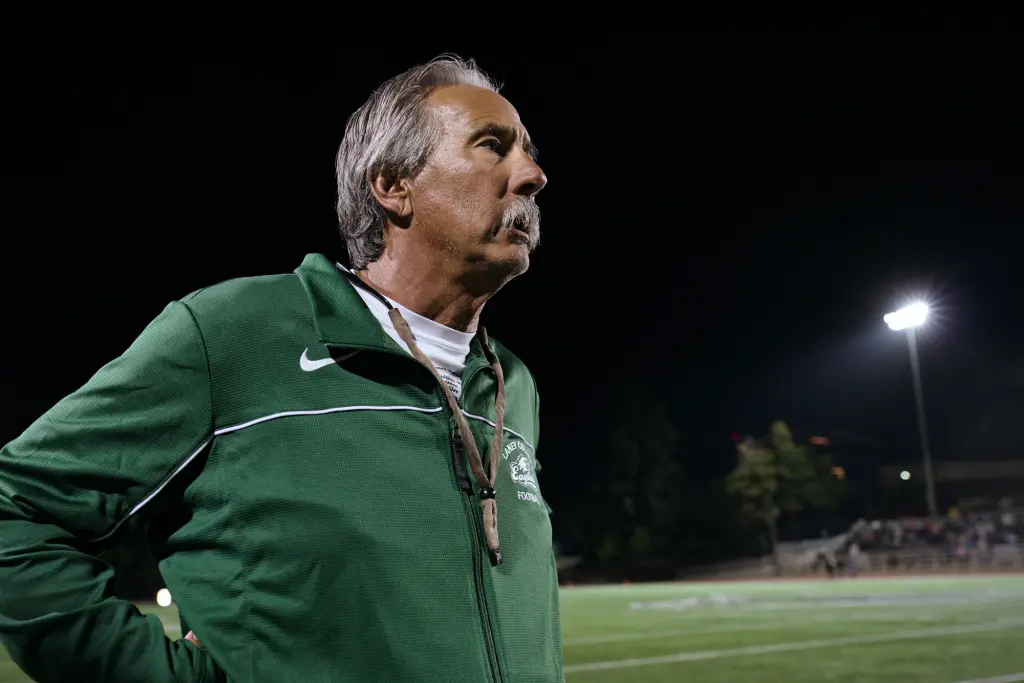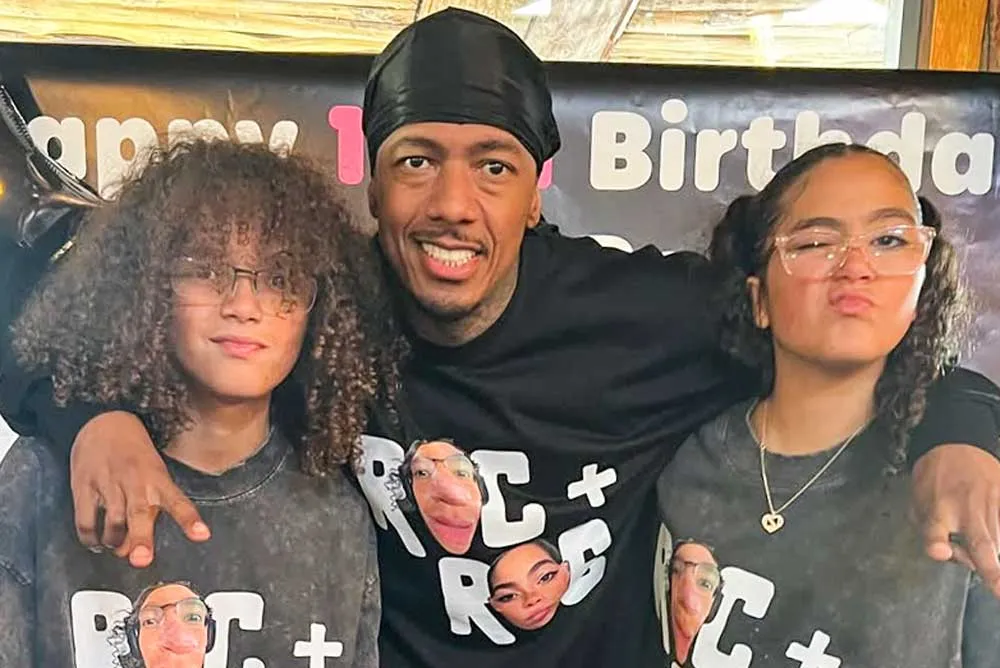John Beam, the beloved ‘Last Chance U’ coach who transformed countless young athletes’ lives, dead after being shot on campus — community in shock as details unfold
John Beam spent more than four decades shaping young athletes, rescuing struggling football programs, and turning community-college fields into launching pads for futures that once seemed impossible. To countless players, he wasn’t simply a coach; he was a lifeline, a mentor, a disciplinarian, and a believer in second chances. His steady presence and trademark mustache made him instantly recognizable to millions around the world after Netflix’s “Last Chance U” featured him in its 2020 season, but long before television cameras arrived at Laney College, Beam had been building a legacy defined by resilience, empathy, and unwavering commitment.
On Friday, the man known to generations of players as “Coach Beam” was shot in the head on campus in Oakland, California, and died shortly afterward — a devastating loss that stunned students, colleagues, fans, and the broader sports community. Beam, who served as Laney College’s athletic director and previously as its head football coach, was 65. Authorities have released limited details about the circumstances surrounding the shooting as the investigation remains active, but the impact of his death was immediate, rippling far beyond the campus where he spent so much of his life.

For those who watched him on “Last Chance U,” Beam was a striking presence: calm, authoritative, compassionate, but unafraid to deliver hard truths. He represented the side of junior-college football that most people never see — the part where young men navigate poverty, family instability, academic challenges, and emotional scars in pursuit of a future that football might make possible. His appearance in the series was brief compared to some other coaches in earlier seasons, but it was powerful. Viewers called him the most level-headed coach the documentary had ever featured, someone whose leadership was rooted not in theatrics but in the belief that accountability and kindness can coexist.
Beam’s career began in Oakland high schools long before his tenure at Laney College. He coached at Skyline High School for 22 years, revitalizing the football program and creating a pipeline of local athletes who earned scholarships across the country. When he moved to Laney College, he helped elevate the Eagles into a regional powerhouse, eventually guiding the team to a state championship in 2018. His coaching style was never about flash. It was about fundamentals — discipline, effort, reliability — and about pushing athletes far past what they believed possible.
Players who had moved on from Laney spoke frequently about how Beam had changed their lives. Many came from difficult backgrounds. Some had nowhere else to turn. Others had left four-year colleges under complicated circumstances and needed a place to rebuild. Beam made sure they understood that football alone wouldn’t save them. He pushed them to attend class, to show up on time, to take responsibility, to learn how to advocate for themselves. He wasn’t there to coddle them. But he wasn’t there to abandon them either.
That’s what made the news of his death so heartbreaking for those who knew him. Laney College expressed its grief in a brief initial statement, describing Beam as “a pillar of our community, a leader who dedicated his life to uplifting young people.” Students gathered on campus in the hours after his death, some in tears, others in stunned silence, trying to process how someone so deeply rooted in their community could be gone so suddenly.
People who worked alongside him remembered him as a man who rarely raised his voice but always commanded a room. He knew the names of every athlete, every trainer, every equipment manager, and every grounds staff member who kept the program running. He showed up not only for games but also for tutoring sessions, academic meetings, and family emergencies. He offered second chances even when others had given up on a player. And because of that, hundreds of athletes credited him with helping them climb out of circumstances that might have swallowed them whole.
Those who followed Beam through “Last Chance U” learned quickly that Laney College was more than just a stopover for athletes hoping to earn a Division I scholarship. It was a community shaped by diversity, adversity, and determination, a place where football became an anchor in young men’s lives. Beam embodied that spirit — one of toughness blended with compassion. He didn’t care where a player came from. He cared where they were going.
The tragic violence that claimed his life only deepened the sense of loss for the Oakland community, where Beam was widely respected. Oakland has long struggled with pockets of crime and instability, but Beam’s presence at Laney had always been a source of pride, stability, and continuity. To many who live in the area, the campus was one of the few places where they saw positive change happening consistently. Beam played a major role in that.
Investigators have not released a full timeline of the shooting. Reports indicate that Beam was on or near the Laney College campus when he was shot in the head, and emergency responders transported him to a local hospital where he was pronounced dead. Details on a suspect or motive were not immediately disclosed, leaving the community searching for answers. As of now, officials have stated that there is no known threat to students or faculty, but the investigation remains ongoing.
As news of his death circulated, tributes poured in from around the country. Former players expressed disbelief and heartbreak, sharing photos, game-day memories, and stories of how Beam guided them through some of the hardest moments of their lives. Coaches from rival programs voiced admiration for his leadership and his relentless commitment to junior-college athletics, a realm often overlooked in the broader sports landscape. College football fans who discovered him through Netflix wrote messages reflecting the respect he commanded even through a television screen.
Beam’s influence was not limited to football fields or locker rooms. He worked closely with Oakland community programs focused on education, youth development, and mentoring initiatives. He believed in giving young people the tools to build sustainable futures, whether or not those futures involved football. Many students who were never athletes still knew him as a friendly, grounding presence on campus — someone who always had time to offer advice, support, or a steady word when life felt overwhelming.
To understand the magnitude of his passing, one must understand what junior-college sports represent. For many athletes, JUCO programs are their last hope — a final chance to prove themselves academically, athletically, and personally. These programs demand enormous resilience, as students juggle long hours, financial hardship, and emotional pressure. Coaches like Beam don’t just train players. They shape lives. They provide structure in places where structure is rare. They offer opportunity where opportunities are scarce.
Beam excelled at that role because he lived it with sincerity. His players described him as fair, honest, and consistent. He didn’t play favorites. He didn’t sugarcoat the truth. He didn’t shy away from difficult conversations. And yet, he treated players like family — pushing them hard not because he wanted wins, but because he wanted them to believe in themselves the way he believed in them.
Even those who interacted with him briefly felt the impact of his presence. Netflix viewers often commented on how calm he remained even when the team struggled. In a documentary series known for capturing explosive coaching styles and on-field meltdowns, Beam stood out as a coach who led through stability rather than chaos. He demanded excellence without belittling his players. He held them accountable without breaking them.
For many, that made him unforgettable.
His death feels like the loss of an anchor — not just for Laney College, but for every athlete who ever needed a second chance and found one because of him. The empty space he leaves behind cannot be easily filled, because his impact was built over decades of quiet, consistent work that didn’t seek attention or praise.
As investigators continue their work, the college community is beginning the painful process of mourning. Candlelight vigils are being planned. Alumni are traveling back to Oakland to pay their respects. Messages of grief and gratitude continue to flood social media. Beam’s family has not yet released a public statement, but those close to them say they are overwhelmed by the outpouring of love and support.
In the end, John Beam’s life was defined not by the tragedy that ended it, but by the countless lives he lifted along the way. His legacy lives on in every athlete who found purpose, every student who found direction, and every young man who discovered strength he didn’t know he had because Beam believed in him first.
His loss is immeasurable. His influence is permanent.



